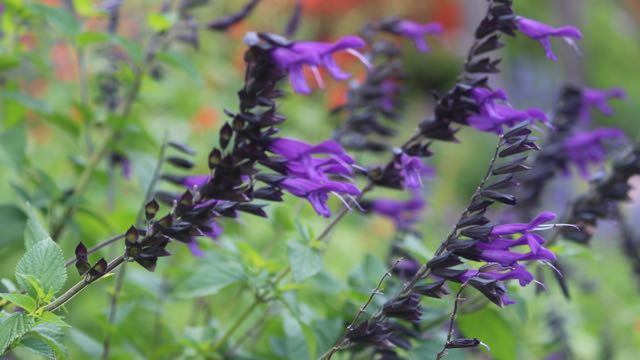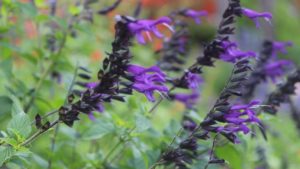
Salvia ‘Amistad’ is one of the best performing cultivars and a must-have plant for a salvia collection. It has large purple-blue flowers in dark purple calyces, and will flower abundantly for most of the year in warm climates.
It is a bushy salvia, about 1.5 m high and 2 m across. Leaves are around 7 x 5 cm, broad at the base and coming to a point, mid green and covered with tiny stiff hairs.
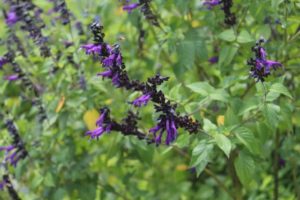
Amistad was discovered and introduced by Argentine salvia expert Rolando Uria. It is believed to be a hybrid, with Salvia guaranitica as one parent, and it bears the large blue-hued flowers of guaraniticas. As it is a patented cultivar, it is illegal to sell it without permission. Legal plants for sale can be recognised by their official colour labels.
Cultivation
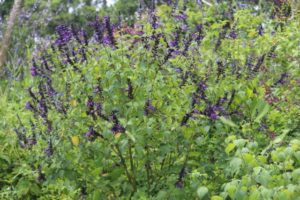
Salvia ‘Amistad’ likes full sun and well drained soil. It is a resilient plant and has coped with extended periods of both dry and wet weather here.
Propagation is by cuttings, which root very easily. It appears to be a sterile hybrid, so is not propagated by seed.
Plants can flower year-round, although each plant probably needs to pause for a while. I have planted out cuttings in late Summer which have started flowering in Winter just as the parent plants tapered off. The main flowering season is Spring till Autumn.
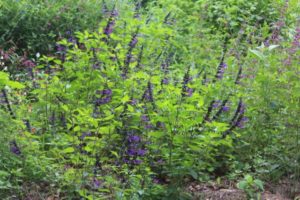
The flower colour is intense and the plant tends to be a bit rangy, so it is probably best suited to sporadic planting through a garden, to give pops of purple. The flowers are held right out from the foliage on long spikes. As a mass planting it is rather dramatic.
Salvia ‘Amistad’ needs at least annual pruning to bring in the leggy growth. Here I prune when the new shoots begin from low stems, in late Winter. Be wary of such early pruning if you have frost danger, though. If you can bear to remove the flowering stems, plants respond very quickly to a Summer pruning with new stems that flower immediately.

